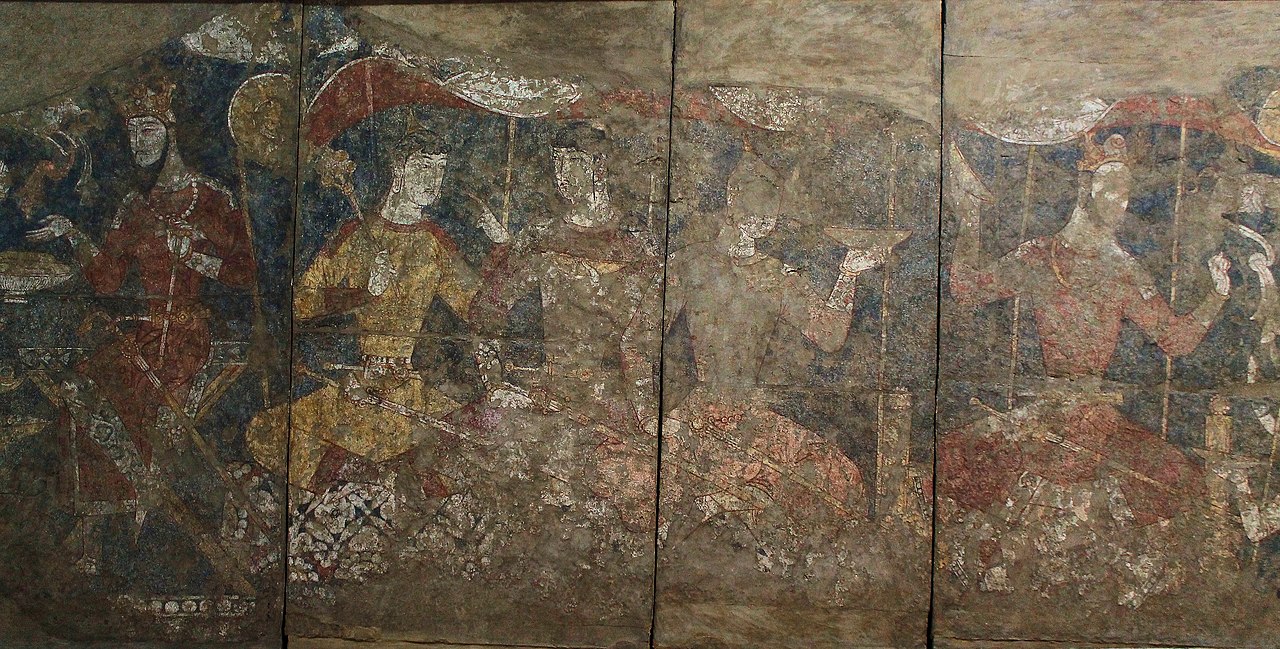
Try Amazon Audible Premium Plus and Get Up to Two Free Audiobooks
Rings and Dragons Cycle, The Two Kings Feasting.
Sogdian Mural from Panjakent, Sector VI, Room 1, c. 700-722AD
Tajikistan National Museum of Antiquities, Dushanbe.
 A larger image of Rings and Dragons Cycle, The Two Kings Feasting. Sogdian mural from Panjakent. Photo by Robert Wilson |
 A larger image of the right of the mural. Image source: blog.goo.ne.jp |

Image source: Penjikent. Part 1: Sogdian stories





